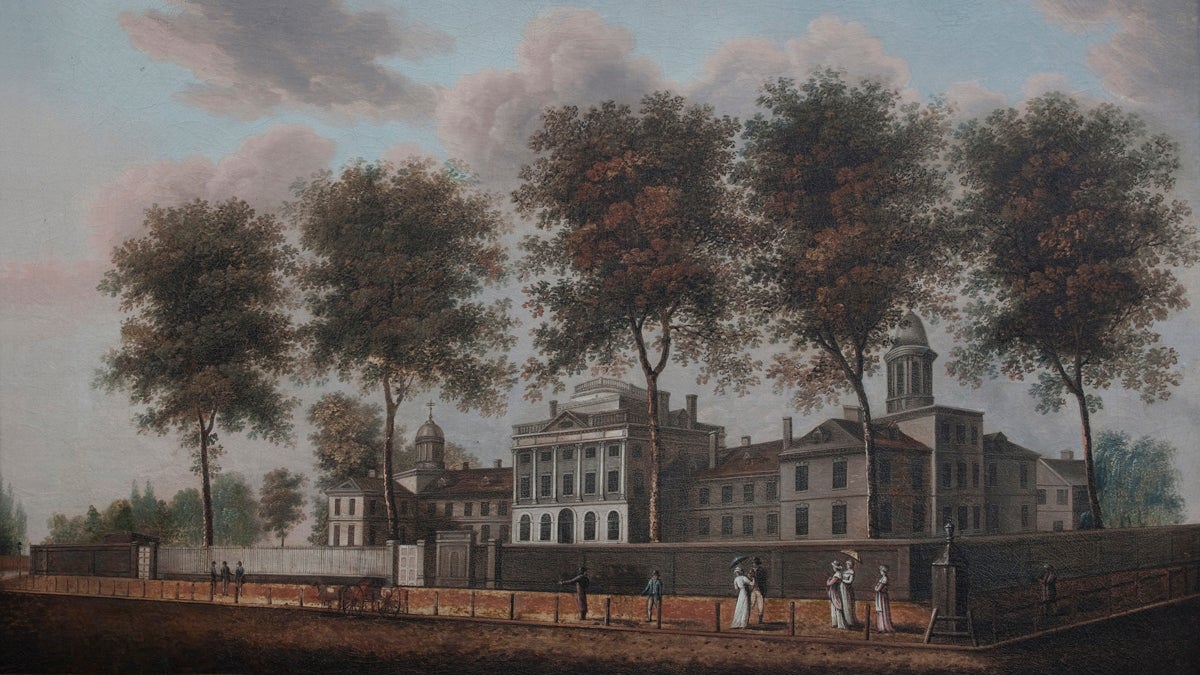How a moat shaped mental health care in the United States
Listen
Pennsylvania Hospital. (One time use courtesy of Pennsylvania Hospital and Robert Neroni)
Right along the original, brick buildings, behind the carefully maintained shrubs and flowers, is a rather unusual piece of landscaping, mostly hidden to passersby: it’s a moat, and it has been in existence since the hospital’s opening in the mid 1700s.
Pennsylvania Hospital, the nation’s first chartered hospital, is still in operation today. It’s busy. Apartments and businesses surround the hustle of scrubs, wheelchairs and white coats. But right along the original, three-story brick buildings, behind the carefully maintained shrubs and flowers, is a rather unusual piece of landscaping, mostly hidden to passers-by: it’s a moat, and it has been in existence since the hospital’s opening in the mid 1700s.
“If you think about a moat built around a castle filled with water, ours was dry,” said the hospital’s chief archivist, Stacey Peeples.
In some places, this dry moat is more than seven feet deep and four feet wide, paved with brick. But this moat, according to historian Nancy Tomes, was not built for aesthetic purposes. It was designed as part of the treatment for people with mental illnesses, rich and poor, who were being cared for at the hospital.
Now, walking through this moat more than 200 years later, Tomes traces the story of an often overlooked chapter in the development of mental health care in the United States, from the hospital’s basement cells, to ‘The House,’ to the people who would have walked this very path two centuries ago.
This tour also takes an unusual turn, because despite being hidden, this moat (and what it represented), used to attract a lot of attention… too much attention.
We consider this story a must-listen. For the best experience, click play in the audio player above to hear the full story.
WHYY is your source for fact-based, in-depth journalism and information. As a nonprofit organization, we rely on financial support from readers like you. Please give today.



